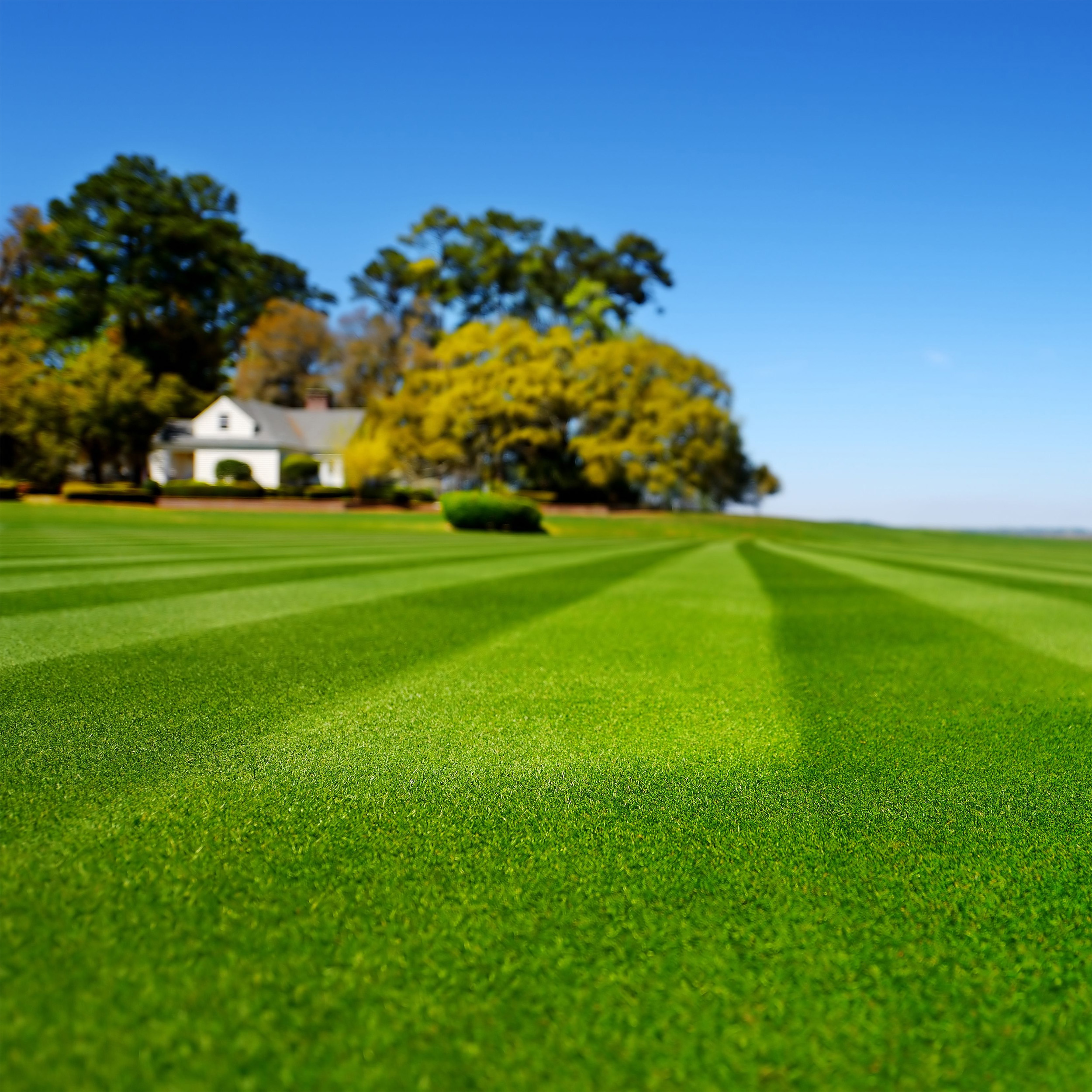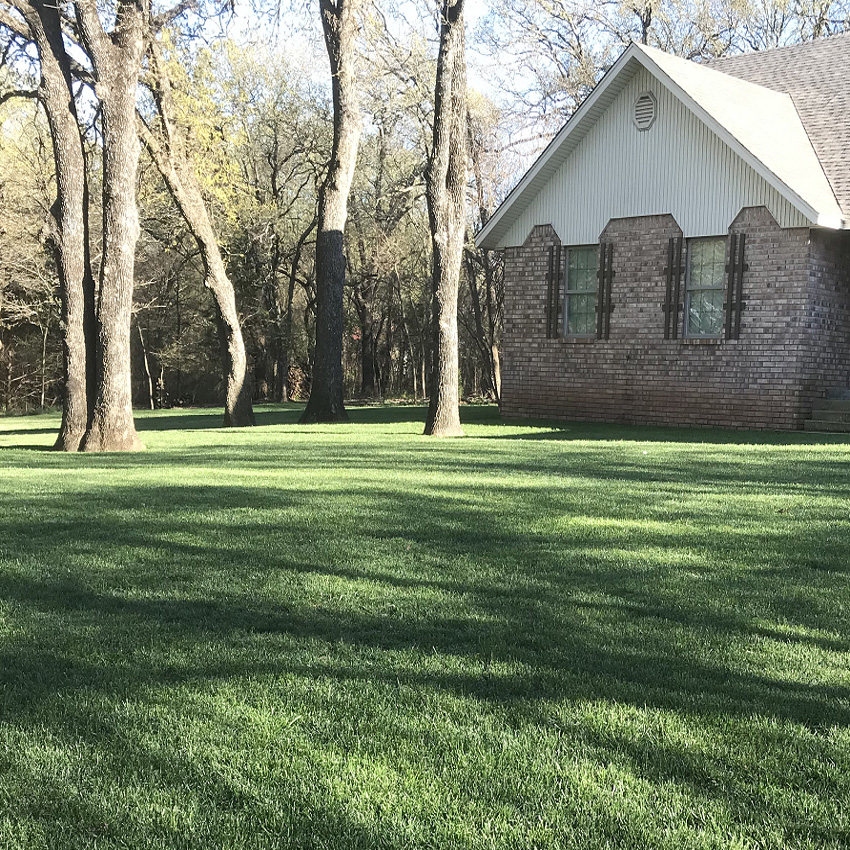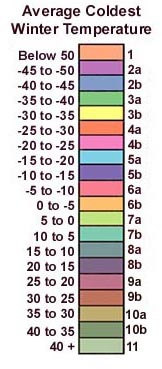
Blackjack Bermudagrass
- Cost Effective
- Warm Season
- Deep green color
Grasses used in Georgia can be divided in to two groups: warm season grasses and cool season grasses. Perhaps the most important factor in developing and maintaining an attractive and problem-free lawn is to choose a grass that is adapted to your area and has the qualities you desire. Georgia has widely differing geographical areas and local climates. A grass that will do well in the southern part of the state may not survive winter in the mountain area. Conversely, cool-season species are not suited to the hot, humid summer of the Coastal Plain area. First, let's distinguish between cool-season and warm-season species.
Cool-season grasses:
Tall Fescue (Festuca arundinacea). Perhaps the most popular grass in the mountain and upper piedmont areas of Georgia is tall fescue. This is a perennial bunch-type grass that grows rapidly and requires frequent mowing in the spring and fall. Tall fescue needs more water than the warm-season grasses to stay green during the summer. It is quickly established from seed and grows well in full sun as well as moderate shade. Tall fescue will tolerate a wide range of soil conditions, but like most turfgrasses grows best with a soil pH between 5.5 and 6.5. Lawns planted in tall fescue tend to thin out and become "clumpy" thus requiring reseeding every three or more years.
Kentucky Bluegrass (Poa pratensis). Kentucky bluegrass has a medium leaf texture and a bright, pleasing color. There are many varieties which grow well in and north of the upper piedmont areas of Georgia. Kentucky bluegrass can become semi-dormant during hot weather, and grows best in a fertile soil with a pH of 6 to 7. While it does best in partial shade, it will grow in open sun if adequate moisture is present.
Perennial ryegrass (Lolium perenne). Ryegrass is suited for temporary cool-season turfgrasses throughout Georgia. They can be used as a temporary winter cover on new lawns that have not been permanently established. Ryegrasses are also used for overseeding, that is, to provide a green cover on a warm-season grass during the winter. However, overseeding may damage the warm-season grass unless managed correctly in the spring because the ryegrass competes for moisture, sunlight and nutrients.
Warm-season grasses:
Bermudagrasses (Cynodon Spp). All bermudas thrive in hot weather but perform poorly in shade. Bermudas spread so rapidly by both above-and-below-ground runners that they are difficult to control around flower beds, walks and borders. If fertilized adequately, they require frequent mowing. The bermudagrasses are adapted to the entire state and tolerate a wide soil pH.
| Click Name To View Grass Seed Choice | Type | Applications | |
|---|---|---|---|
| Bermuda Grass - Oasis |
|
Warm Season | Lawns - Full Sun - Fast Growing |
| Bermuda Grass - Blackjack |
|
Warm Season | Lawns - Full Sun - Fast Growing |
| Bermuda Grass - Yukon |
|
Warm Season |
Lawns - Golf Course - Fast Growing Full Sun - High End - Best Cold Tolerance |
| Bermuda Grass - Arden 15 |
|
Warm Season |
Lawns - Golf Course - Fast Growing Full Sun - High End |
| Centipede Grass |
|
Warm Season | Lawns - Mostly Sunny to Full Sun - Low Maintenance |
| Seashore Paspalum - Seaspray |
|
Warm Season | Lawns - Mostly Sunny to Full Sun - Best Salt Tolerance |
| Fescue/Hybrid Bluegrass Mix - Combat Extreme South |
|
Cool Season |
Lawns - Wear Tolerant - Extra Heat Tolerance Shade Only in USDA Zones 9 - 10 |
| Fescue Blend - Combat Extreme Transition |
|
Cool Season |
Lawns - Wear Tolerant - Shade Only in USDA Zones 9 - 10 |
| Kentucky Bluegrass - Bluegrass Supreme |
|
Cool Season |
Lawns - Golf Gourses - Full Sun Only North Georgia In Light Shade |
| Kentucky Bluegrass - Midnight |
|
Cool Season |
Lawns - Golf Courses - Full Sun Only North Georgia In Light Shade |
| OSP Ryegrass |
|
Cool Season | Lawns - Golf Courses - Southern Winter Overseed |


Carpetgrass is recommended only for lawns on wet, low fertility, acid, (pH 4.5-5.5) sandy soils where ease of establishment and care is more important than quality. Its chief disadvantage is rapid seedhead production.
Centipedegrass (Eremochloa ophiuroides). This is a low, medium textured, slow growing but aggressive grass that can produce a dense, attractive, weed-free turf. It is more shade tolerant than bermudagrass but less shade tolerant than St. Augustine and zoysiagrass. Since centipede produces only surface runners, it is easily controlled around borders of flower beds and walks. It is well adapted as far north as Atlanta and Athens.
Centipede is the ideal grass for the homeowner who wants a fairly attractive lawn that needs little care. Centipede does not require much fertilizer or mowing, and compared to other lawn grasses, is generally resistant to most insects and diseases. It will, however, respond to good management and provide a very attractive turf. Centipede can be established from either seeds or sprigs. Since it is slow growing, it takes longer than bermuda and St. Augustine to completely cover.
Centipede is subject to "decline" problems that can be prevented by proper management. This includes care not to overfertilize, prevention of thatch accumulation, irrigation during drought stress, particularly in the fall, and maintaining a mowing height of 1-1 1/2 inches. Centipede is well adapted to soils of low fertility with a pH of 5.0 to 6.0 but grows best, like most grasses, at a soil pH of 6.0 to 6.5.
Below is the USDA Zone Map for Georgia so you can determine which zone you reside in. Below that are our picks for your state which will do best in your area. Next on this page are tables which list various grasses and their characteristics so you can compare before you decide on your purchase. Click on the product name (ie. La Prima) for more information about that grass and to make your purchase.
| USDA Zone Map For Georgia | |
|---|---|
 |
 |
| Compare Various Grasses For Their Characteristics | ||||||||
|---|---|---|---|---|---|---|---|---|
| Cool Season Grasses |
Leaf Texture |
Establish Rate |
Nitrogen Use |
Water Use |
Drought Tolerance |
Salinity Tolerance |
Shade Tolerance |
|
| Fescue - Hard | Fine | Slow to Moderate |
Low to Very Low |
Moderate | Excellent | Low to Moderate |
Excellent | |
| Fescue - Creeping | Fine | Moderate | Low to Moderate |
Moderate | Good | Low | Excellent | |
| Fescue - Turf Type | Moderate to Coarse |
Moderate | Moderate to High |
Low to Moderate |
Excellent | Low | Good to Excellent |
|
| Ryegrass - Perennial | Fine to Moderate |
Very Fast | Moderate to High |
Moderate to High |
Good | Poor to Moderate |
Poor to Moderate |
|
| Warm Season Grasses |
Leaf Texture |
Establish Rate |
Nitrogen Use |
Water Use |
Drought Tolerance |
Salinity Tolerance |
Shade Tolerance |
|
| Bermudagrass | Fine to Moderate |
Moderate to Fast |
Moderate | Moderate to High |
Excellent | Very Good | Poor | |
| Centipedegrass | Moderate to Coarse |
Slow | Low | Low | Good | Moderate | Moderate to Good |
|
| Seashore Paspalum | Moderate | Moderate | Moderate | Moderate | Excellent | Excellent | Good | |
| Compare Various Grasses For Their Characteristics - Continued | ||||||||
|---|---|---|---|---|---|---|---|---|
| Cool Season Grasses |
Fertility Needs |
Wear Resistance |
Mowing Height |
Cold Tolerance |
Acid Soil Tolerance |
Thatching Tendency |
Heat Tolerance |
|
| Fescue - Hard | Low | Low | Medium | Medium to High |
Medium to High |
Low to Medium |
Low to Medium |
|
| Fescue - Creeping | Low | Low | Medium | High | Medium to High |
Low to Medium |
Low to Medium |
|
| Fescue - Turf Type | Low to Medium |
Medium to High |
Medium to High |
Medium | High | Low | High | |
| Ryegrass - Perennial | Medium | High | Low to Medium |
Medium | Medium | Low | Medium to High |
|
| Warm Season Grasses |
Fertility Needs |
Wear Resistance |
Mowing Height |
Cold Tolerance |
Acid Soil Tolerance |
Thatching Tendency |
Heat Tolerance |
|
| Bermudagrass | Medium | High | Low to Medium |
Low to Medium |
Medium | Medium | High | |
| Blue Grama | Low | Low | High | High | Low | Low | High | |
| Buffalograss | Low | Low | High | High | Low | Low | High | |
| Centipedegrass | Low | Low | Medium to High |
Medium to High |
High | Medium | High | |
| Seashore Paspalum | Medium to High |
Medium to High |
Low | Medium | Low | Medium to High |
High | |